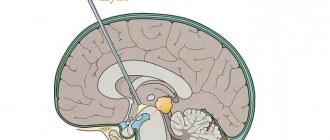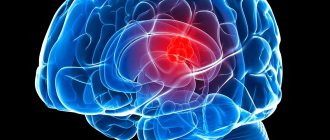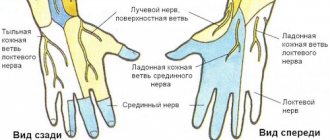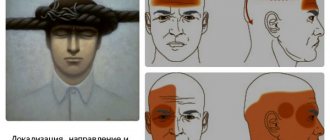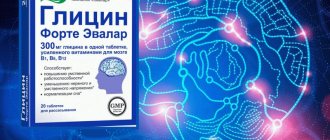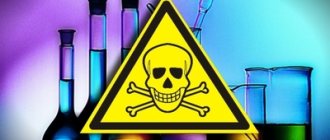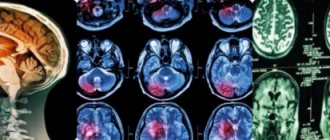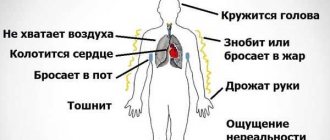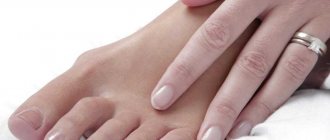Treatment methods for children with cerebral palsy
Treatment and rehabilitation of children with cerebral palsy must be carried out as early as possible, during the period of intensive development of the child’s brain. A child's brain cells can recover much faster and are more likely to recover from damage than those of an adult. Nervous tissues of an adult also have the property of neuroplasticity, but to a lesser extent, which increases the time and burden of treatment. At the stage of drawing up the most optimal recovery program, many factors are taken into account, which include:
- Degree of brain damage
- Frequency and nature of convulsive spasms
- Presence of concomitant pathologies.
In order for the treatment of cerebral palsy to be as effective as possible, it is necessary to take a comprehensive approach to this issue.
Many of the methods we present in the treatment of cerebral palsy in children are unique!
Our center uses the latest and highly effective treatment methods
, which, when used correctly, lead to a significant improvement in the child’s condition and contribute to the effective treatment of cerebral palsy in children by restoring motor skills, cognitive functions and speech disorders.
The methods used in our center for the treatment of cerebral palsy in children allow us to directly influence the structures of the brain stem, vestibular nuclei, cerebellar peduncles responsible for balance, through the lingual branches of the cranial nerves, introducing changes in the function of these structures, which entails changes in muscle tone, improvement of coordination function, balance.
This makes it possible to effectively restore motor skills in children, because the child is taught new motor skills, since he did not know how to sit, stand, or walk.
Treatment of cerebral palsy is aimed at developing new motor skills in children with cerebral palsy by improving vestibular function, forming static and statokinetic righting reflexes, extinguishing postural automatisms and improving central nervous system control over muscles.
Video report on the use of TLNS in the treatment of cerebral palsy
The unique TLNS technology is presented in the Stavropol region exclusively at NEURO-CLINIC and is produced using the PoNS device (Helius Medical USA)
This stimulation is based on the stimulation of natural flows of nerve impulses to the brain stem and cerebellum through the lingual branches of the cranial nerves and changes the functions of these structures.
The therapeutic course of treatment for cerebral palsy is always individual and may include:
- Translingual neurostimulation.
- Micropolarization.
- Correction of speech disorders
- Bioacoustic correction of the brain.
- Massage.
- Therapeutic physical education (physical therapy).
- Myoneurostimulation
- Microcurrent reflexology.
Anticonvulsants (seizure)
Anticonvulsants are prescribed in hopes of reducing or preventing seizure activity. They also stabilize mood. Anticonvulsants reduce or depress, excessive stimulation of the brain without affecting breathing or causing drowsiness. Different medications control different types of seizures. To properly diagnose, the health care provider selects the type and dosage appropriate for the specific type of seizure the child is experiencing. The child is then closely monitored for any adverse reactions that may lead to prescription or drug changes.
Prescriptions must be followed as prescribed so that medications can be properly monitored and regulated. Parents are encouraged to keep a log of episodes and reactions for practitioner check.
The medication's indications may be changed or dosages modified based on the child's reactions, or over time, as the child's body is likely to build tolerance to the treatment. A child's dosage may be higher than that required for an adult, and children process the drug more quickly. Individuals are known to respond differently to anticonvulsants.
The anticonvulsant dose can be increased, but at a certain point it becomes appropriate to switch medications—an event known as switching—altogether. If transition occurs, the child is weened from previous treatment to minimize or facilitate withdrawal. Withdrawal can cause restlessness, convulsions, delirium, hallucinations, temperamental tandrums, tremors, and even death.
In some cases, practitioners prescribe multiple drug therapy by combining more than one anticonvulsant. This increases the risk of side effects, drug interactions, and complicates the ability to analyze response with prescriptions.
Side effects from anticonvulsants may vary depending on the drug given, but may include constipation, cramps, dizziness, drowsiness, fatigue, hair loss, headaches, urinary incontinence, and nausea. Anticonvulsants may also cause changes in appetite, mood, weight, and vision.
Common anticonvulsants include:
- Gabapentin (Neurontin)
- Lamotrigine (Lamictal)
- Oxcarbazepine (Trileptal)
- Topiramate (Topamax)
- Zonisamide (Zonegran)
Confirmation of the effectiveness of our method of treating cerebral palsy
The study at the base involved 65 children with cerebral palsy (a form of spastic diplegia) aged 3 to 13 years. The patients had intact intelligence and had no history of seizures. The test group included 45 patients, the control group – 20 patients. Children in the test group received standard treatment, 10 daily exercise therapy sessions (20-25 minutes) and translingual neurostimulation (20 minutes). Patients in the control group received standard therapy and 10 daily exercise therapy sessions (20-25 minutes) without neurostimulation. Specialized exercise therapy was developed on the basis of hospital No. 40 in the form of sets of exercises that were selected individually, based on the clinical picture and psychomotor development of the patient.
Antidepressants (depression medications)
Antidepressants are psychiatric drugs with mood-altering and analgesic properties used to treat depression, anxiety, and in some cases seizures. A third of those with a chronic illness, such as cerebral palsy, may be depressed. Depression is a persistent feeling of sadness, helplessness and hopelessness.
The following factors inherent in impairment may contribute to an individual's depression:
- Anticipated Limitations
- Chronic pain levels
- Alleged stigmas of those with disabilities
- Lack of control and coordination
- Dependence on others
- Feelings of helplessness
- Peer pressure
- Social isolation
- The quality of life
In addition, depression can worsen your health by:
- Aggravated cerebral palsy
- Declining trust
- Increased fatigue
- Increased pain
- Decreased ability to cope
Not only are people at risk for chronic illnesses, but their caregivers are also at risk of depression due to:
- stress care for a person with chronic diseases
- daily challenges, living with added responsibility
- feelings of helplessness and hopelessness in not being able to cure the person
- the emotional burden of diagnosing a child and the lifelong realities of the condition
- financial burden of disability
- feeling depressed
With depression comes loss of appetite, concentration, energy, interest, sleep and pleasure. Other signs of depression may include:
- Fatigue
- Indecisiveness
- Irritability
- Insulation
- Lethargy
- Dejection
- Personality change
- Pessimism
- Hot temper
- Suicidal tendencies or thoughts
- Nagging
Surprisingly, research shows a person is more prone to depression due to a lack of coping skills and perspective rather than the actual severity of the medical condition. Some reported the stigma associated with depression keeps people from seeking help. However, depression is highly treatable.
Treatment for depression is multifaceted. Focus on receiving emotional support, guidance, counseling and perspective. Drug treatment may be used alone or in combination with any of the following:
- Behavioral therapy – identify and address perceptions and gain a new perspective
- Biofeedback and massage - to relax, meditate, calm, peacefully retreat, and invigorate
- A healthy diet and exercise provide the body with the essentials it needs to cope
- Sleep - proper rest and revitalization
- Support groups – for emotional support and related to others in a similar condition
- Psychotherapy – for professional help to optimize mental health
The benefits of treating depression can be life-changing. Drug therapy changes brain chemistry in a way that can produce euphoria, provide hope, increase energy levels, supply optimism, increase therapy participation, and provide the ability to cope with daily life. A person who refuses treatment for depression risks increasing symptoms and, in some cases, developing suicidal tendencies. A person with depression may not always recognize or acknowledge their condition.
Antidepressants, when combined with other medications, can cause serious side effects and death. The primary healthcare provider must be aware of all prescriptions, treatments and health conditions to prevent drug interactions, harmful side effects, or dangers. Antidepressants may also be harmful during pregnancy. If you suspect pregnancy, you should consult your doctor immediately.
Side effects from antidepressants may include:
- Agitation
- Vague Vision
- Constipation
- Dizziness
- Dry mouth
- Headache
- Insomnia
- Nausea
- Nervousness
- Stomach upset
- Weight gain
Some commonly used antidepressants include:
- Citalopram - Celexa
- Escitalopram – Lexapro
- Fluoxetine - Prozac
- Paroxetine - Paxil
- Sertraline - Zoloff
Results of treatment of cerebral palsy with a new method
At the end of the course, all patients in the test group showed positive dynamics in the form of decreased muscle tone, improved coordination of movement, and improved control of head and body position in space. After the first course, 29 children learned to walk using supports
,
7 children learned to walk independently
,
5 patients learned to sit independently . The index of general motor control (FMS scale) statistically significantly improved in the entire test group, which was also confirmed by significant activation of motor areas according to f-MRI data.
Positive effects of hippotherapy
The positive effects of hippotherapy are noticeable quite quickly. It is believed that, on average, every ninth child with cerebral palsy begins to walk after hippotherapy, and approximately every tenth child has a decrease in the degree of disability. Our website also contains several materials about the benefits of hippotherapy. For example, the story of Elena Chepkina, who adopted a child with cerebral palsy and put him on his feet thanks to horse riding. Or the story of Andrei Kubasov from the Krasnoyarsk Territory, who received the first category in equestrian sports, despite his disability.
And always remember, cerebral palsy is not a death sentence. On this site we tell the stories of different people who have proven in practice that any obstacle can be overcome.
What causes cerebral palsy
Many factors can cause disturbances in brain development in a child, but the main one is hypoxia - insufficient oxygen supply. This phenomenon can happen in the following cases:
- with incorrect presentation of the fetus,
- with premature separation of the placenta from the walls of the uterus,
- during prolonged or, on the contrary, rapid labor,
- when circulation in the umbilical cord is impaired.
Other very important reasons may be the RH factor (Rh factor) or incompatibility of the blood groups of the mother and fetus, as well as viral infections suffered by the mother in early pregnancy, such as rubella measles.
Risk factors include:
- fetal prematurity,
- premature birth,
- low birth weight.
In all these cases, microorganisms can intensively attack the weakened nervous system of the fetus.
Since the above reasons are associated with the development of pregnancy or the process of childbirth, it can be argued that cerebral palsy cannot be inherited. This is a pathology that occurs during childbirth.
Less common is acquired cerebral palsy, which develops before two years of age and is a consequence of traumatic brain injury or brain infection.
Antispastic (muscle relaxants)
Antispastics, also known as muscle relaxants, are prescribed to relax contracted, overactive, or stiff neck muscles. Antispastic medications are often the first choice of treatment for reducing tremors or managing widespread spasticity, since they are easy to use and noninvasive.
Antispastics can be administered orally in tablet form, or by injection directly into the affected muscles, or by using an intrathecal baclofen pump, which is implanted in the abdomen to deliver the medication directly to the fluid that surrounds the spinal cord. Oral medications are typically prescribed for general spasticity, while injections target a specific muscle. The benefits of oral medications and injections are usually short-term, requiring refills or additional injections. A pump, on the other hand, provides a steady dose of medication on a long-term basis. The pump must be maintained and replenished so as not to risk sudden withdrawal, or death.
The specific antispastic medications, as well as the dosage, duration of treatment, route of administration, and the use of other additional treatments vary depending on each person and his circumstances. For example, oral medications such as Valium are typically administered daily. Alcohol wash injections address specific nerves and can provide relief for several months to several years. Botox is usually injected every three months. Other injectable antispasmodics typically remain effective for three to eight months. Intrathecal baclofen pump appears to be most effective on those with chronic, severe stiffness and those with uncontrolled muscle movements.
Some benefits obtained from antispastic drugs include:
- Muscle contractions control
- Delay surgery
- Increase your range of motion
- Improved ability to participate in therapy
- Reduce violations
- Reduce tremors and muscle spasms
- Relax overactive muscles
- Relax tense muscles
Possible side effects of antispastic medications depend on personality type and dosage, but may include:
- Confusion
- Constipation
- Diarrhea
- Dizziness
- Drowsiness
- Flu-like symptoms
- General weakness
- Headache
- High blood pressure
- Incontinence
- Insomnia
- Liver damage
- Nausea
- Pain after injection
- Slow heart rate
- Slurred speech
Medicines vary in how they relax muscles. Some, like baclofen, relax muscles directly, while others, like diazepam, act on brain chemistry. Botox (R) causes soft muscle paralysis. Commonly prescribed antispastic medications include:
- Baclofen (botulinum toxin or Botox (R)),
- Diazepam (Valium (R)),
- Dantrolene
- Flexeril (Cyclobenzadrine)
- Dantrium (Dantrolene)
- Intrathecal Baclofen
- Tizanidine

